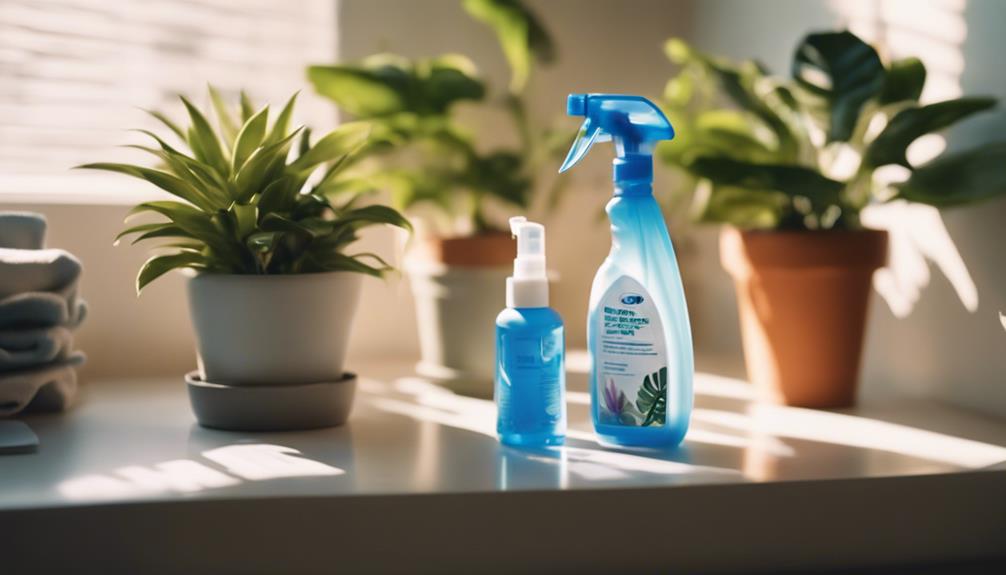Tanning beds may offer a quick tan, but be cautious – there are hidden risks beneath that glow! Using tanning beds can increase your chances of skin cancer by a staggering 75%, especially if you are under 30. They expose your skin to harmful UV rays, which are not only detrimental to your skin but can also damage your eyes. Protect yourself by wearing goggles and maintaining cleanliness, as hygiene is important. Additionally, preparing your skin with exfoliation and moisturization can make a difference. Interested in safely enjoying that glow? There is more information available on how to ensure your tanning experiences are both enjoyable and safe!
Key Takeaways
- Tanning beds significantly increase skin cancer risk, especially melanoma, with a 75% increase when used before age 30.
- UV radiation from tanning beds is harmful, causing DNA damage and accumulating long-term skin cancer risk.
- Always wear protective goggles during tanning sessions to prevent severe eye damage and long-term vision problems.
- Proper skin preparation, including exfoliation and moisturization, enhances tanning results and minimizes skin damage.
Tanning Bed Risks
Tanning beds pose serious risks to your health, considerably increasing your chances of developing skin cancer and causing premature skin aging.
Imagine lying in a cozy bed, thinking you're just catching some rays, but you're actually inviting trouble!
Studies show that using tanning beds, especially before you turn 30, boosts your melanoma risk by a whopping 75%. That's like playing a game where the odds are stacked against you!
Plus, about 75% of skin cancer cases come from UV exposure, which isn't a fun statistic.
You might think a base tan protects you, but that's just a myth.
Understanding UV Radiation

When you step into a tanning bed, you expose your skin to high doses of harmful UV radiation that can lead to serious health risks. Some of these risks include skin cancer, premature aging, and eye damage. It’s important to protect your skin and avoid tanning beds altogether. If you’re looking for a bronzed glow, consider using self-tanning products or getting a spray tan instead. Here are some safe tanning tips to keep in mind: always apply sunscreen with a high SPF, limit your time in the sun, and wear protective clothing and sunglasses.
Think of UV rays like tiny, invisible ninjas sneaking into your skin, causing chaos and damage! These rays can mess with your DNA, increasing your chances of skin cancers like melanoma and others.
It's a bit like eating too much candy; you might enjoy it at first, but too much can really hurt you in the long run!
Plus, there's no such thing as a safe tan—every UV exposure counts.
Eye Protection Measures

Protecting your eyes during tanning sessions is essential, as UV rays can cause serious damage and increase the risk of eye cancers and cataracts over time. Just like your skin, your eyes need protection too—think of them as the little superheroes that help you see all the fun!
You should wear snug-fitting protective goggles every time you use a tanning bed. This helps block out harmful UV light, keeping your peepers safe and sound. Remember, even a quick session can lead to sunburned eyes, which is no laughing matter!
Skin Preparation Tips

Before hitting the tanning bed, prep your skin to enhance results and secure safety. You wouldn't bake a cake without mixing the ingredients first, right? Here are three easy tips to get your skin ready:
- Exfoliate 24 hours before your session to remove dead skin cells for an even tan.
- Moisturize daily leading up to your tanning appointment; hydrated skin absorbs the tan better.
- Skip lotions and makeup on tanning day; leaving your skin bare guarantees the tanning bed's rays reach you effectively.
Taking these steps doesn't just help your tan look great, but it also keeps your skin healthier!
Think of it as giving your skin a little spa day before the big event. You'll love the results!
Tanning Bed Hygiene

Maintaining proper tanning bed hygiene is essential to guarantee a safe and enjoyable tanning experience. You wouldn't want to lie down on a dirty bed, right? Regular cleaning is key to preventing bacteria and keeping things fresh. Use EPA-approved disinfectants, and make sure to ventilate the area while you clean.
Here's a quick table to help you remember:
| Cleaning Task | Frequency |
|---|---|
| Disinfect surfaces | After each use |
| Replace face covers | Every few sessions |
| Change goggles | Every 6 months |
| Deep clean the bed | Weekly |
Safe Tanning Practices

Choosing safe tanning practices is essential for minimizing health risks while achieving the desired tan. You want to look sun-kissed without the negative side effects, right?
Here are three tips to keep in mind:
- Prep Your Skin: Exfoliate and moisturize before tanning; it helps you achieve an even, glowing tan.
- Limit Your Time: Start with shorter sessions to gauge your skin's reaction; you can always tan more later.
- Use Protection: Always wear protective goggles to shield your eyes from harmful UV rays; they deserve some love too!
Recommended Accessories

Investing in the right accessories can enhance your tanning experience while protecting your skin and eyes.
First up, don't forget those protective goggles! They're like superhero masks for your eyes, guarding against harmful UV rays.
You wouldn't leave your house without a jacket on a cold day, right? The same goes for face covers; they help shield your skin from excess UV exposure.
Also, consider using a quality tanning lotion—think of it as sunscreen's stylish cousin that helps you achieve an even tan.
Finally, keep those tanning beds clean! Using EPA-approved disinfectants guarantees you're not sharing any unwanted germs. Regularly wiping down surfaces before and after use is one of the most effective tanning bed hygiene tips to ensure a safe experience. Don’t forget to clean high-touch areas like handles, buttons, and face shields, as these spots can easily harbor bacteria. By maintaining a strict cleaning routine, you not only protect yourself but also contribute to a healthier environment for everyone.
Frequently Asked Questions
Are There Safer Alternatives to Tanning Beds for Achieving a Tan?
Yes, there are safer alternatives to tanning beds. You can try self-tanners, bronzers, or spray tans for a sun-kissed look without harmful UV exposure. These options let you achieve a tan while protecting your skin health.
How Often Can I Safely Use a Tanning Bed?
Using tanning beds before 35 raises melanoma risk by 75%. To stay safe, limit sessions to no more than two to three times a week, and always prioritize proper skin preparation and protection during use.
What Should I Do if I Get Sunburned After Tanning?
If you get sunburned after tanning, cool your skin with aloe vera or cold compresses, stay hydrated, and avoid further sun exposure. Don't apply harsh products; let your skin heal naturally to prevent additional irritation.
Can I Use Tanning Beds During Pregnancy?
As the saying goes, "Better safe than sorry." You shouldn't use tanning beds during pregnancy. The UV radiation can harm both you and your baby, so it's best to avoid them altogether for their safety.
How Do I Choose the Right Tanning Bed for My Skin Type?
When choosing a tanning bed for your skin type, consider your skin's sensitivity and tone. Lighter skin requires lower UV levels, while darker skin can handle higher intensities. Always prioritize safety and follow recommended guidelines.
Conclusion
So, before you jump into a tanning bed thinking you're just getting a little glow, remember this: those UV rays can be sneaky!
They're like that friend who says they'll only borrow your favorite jacket but ends up keeping it forever.
You've got the power to protect yourself by following safety tips and being smart about your skin.
Isn't it better to shine with a healthy glow than risk serious issues later?
Stay safe, and glow wisely!









